Bobcat Coat Color and Camouflage
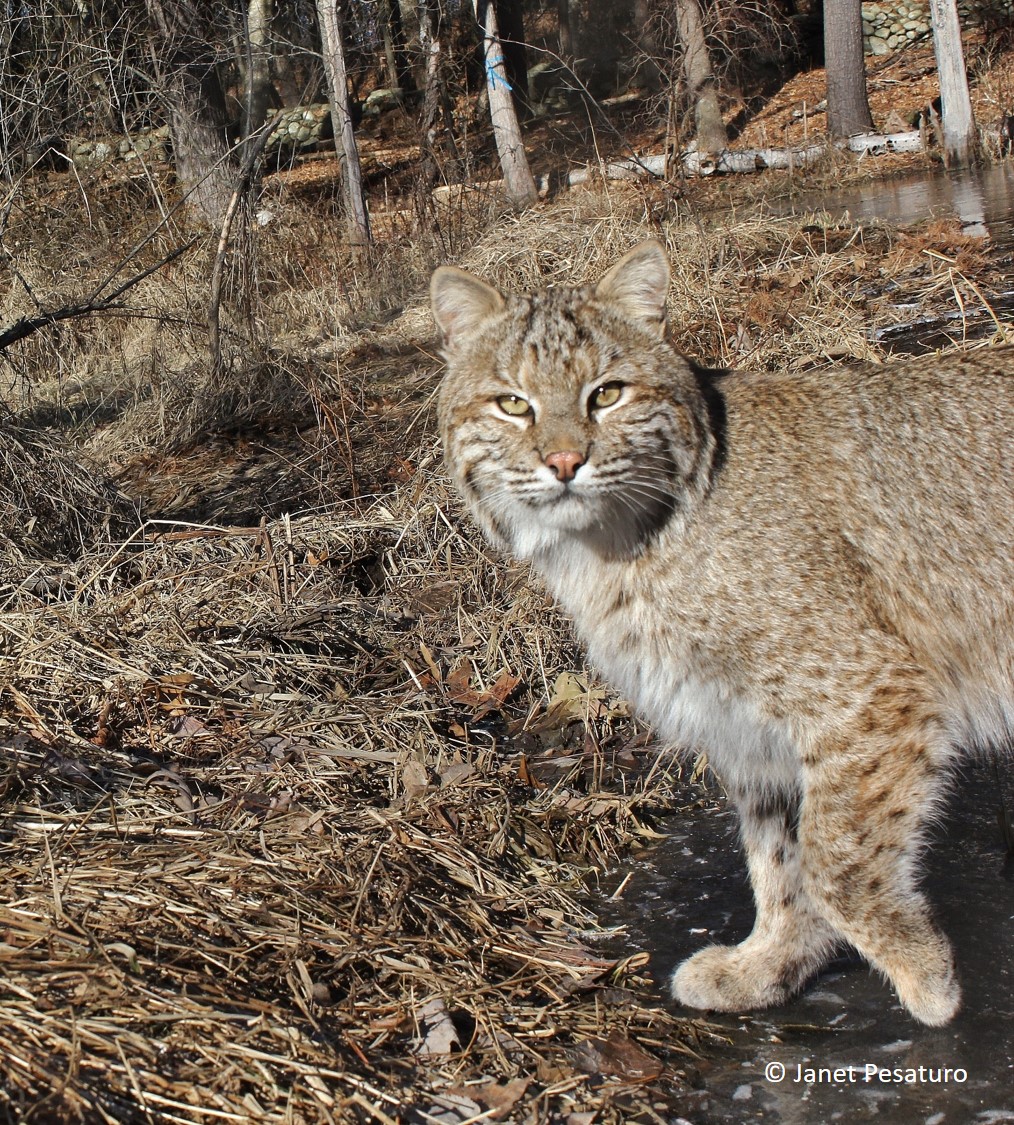
The “rufus” in the bobcat’s scientific name, Lynx rufus, is Latin for red, but most populations are grayer in winter and more reddish in summer. What accounts for these differences in bobcat coat color? Probably the advantage of camouflage: those who blend well with their surroundings are more likely to survive long enough to pass on their genes. The New England bobcat in its winter coat at the top of this page is exquisitely camouflaged. The grayish-buff pelage with small black spots perfectly mimics that grays and browns of fallen, dead winter leaves and grasses, and the dark shadows between them. The white patches of the coat echo the grayish-white of sun bathed tree trunks.
For another look at the same cat in the same place and time, see the video below. It was captured with a different camera, so the colors are a little different, but the cat is still perfectly camouflaged in its grayish-buff winter coat. Notice how the cat disappears into the background as it walks away. Enjoy the raccoons and coyotes in this video, too!
Now here’s a New England bobcat in summer, when deciduous trees and shrubs are clothed in leaves. In these shadier conditions with exposed patches of brown soil, a deeper reddish-brown coat provides better camouflage. For additional examples of New England bobcats in their summer pelage see this post on bobcats playing.
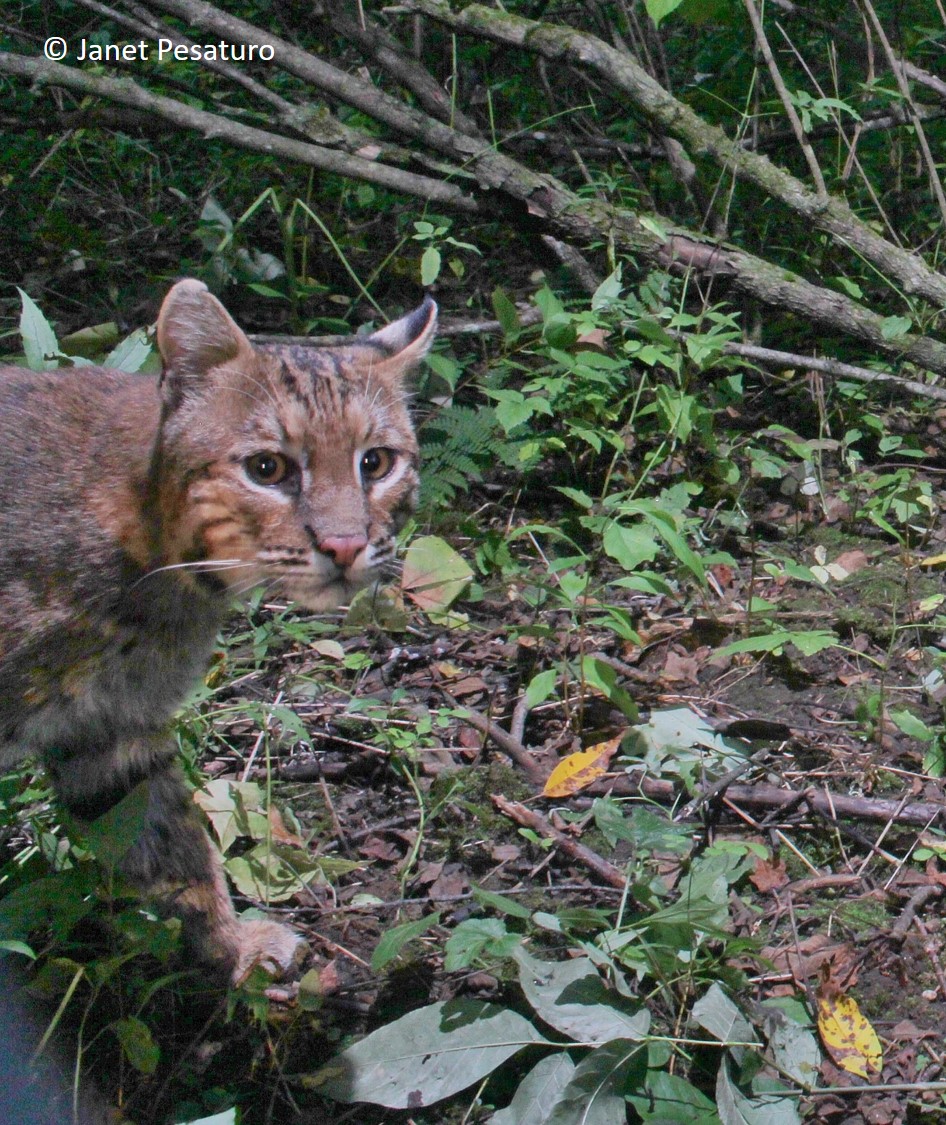
And now here’s a bobcat in summer the southeastern US. It has the same reddish-brown color. The hair in the summer coat is also shorter and thinner, which is fairly obvious in the photo below.
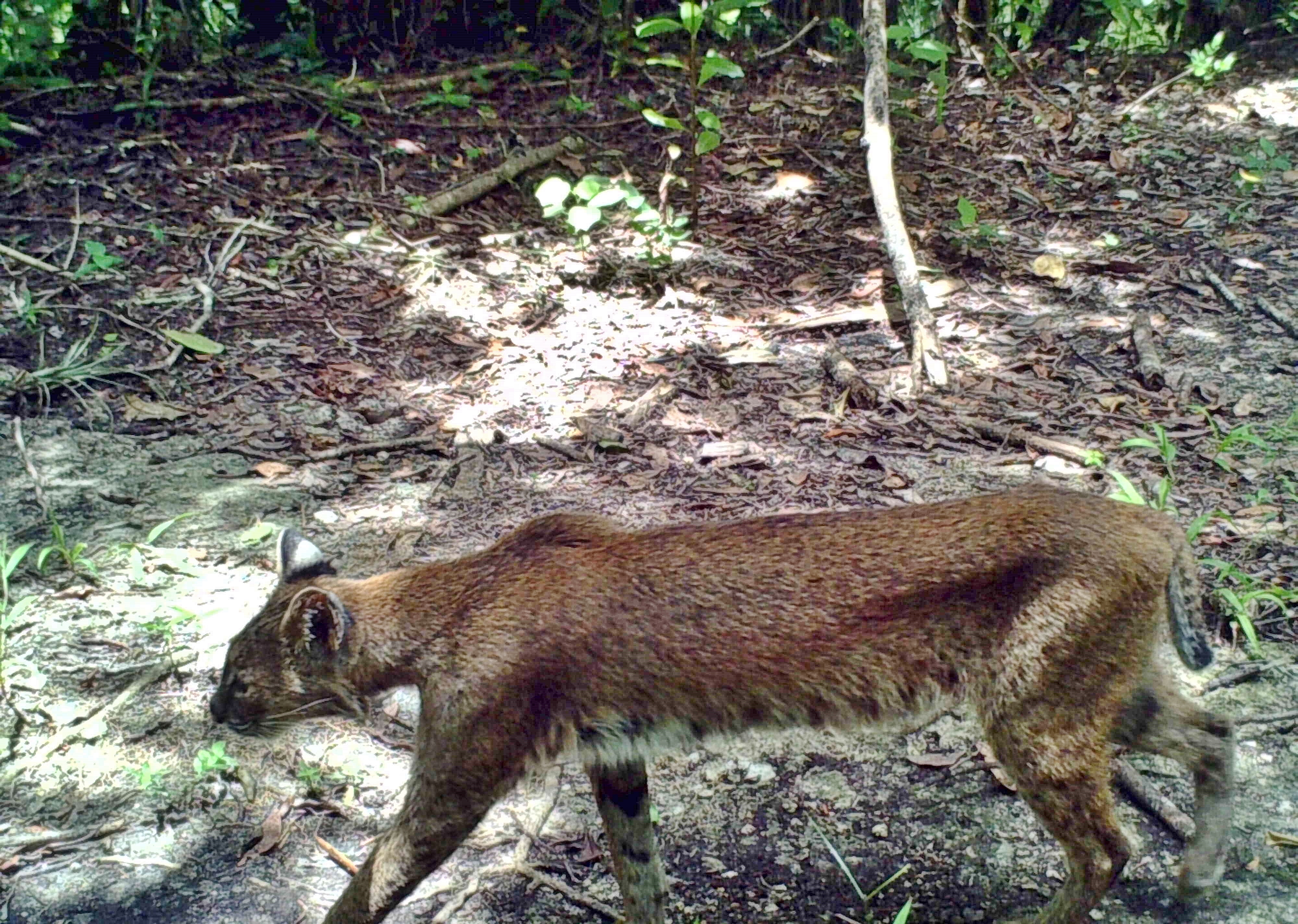
A word of caution, though. Lighting can dramatically influence your perception of color. The following two photos were both captured in winter, just a few days apart. In the morning sun, the cat appears grayish-buff but in the afternoon sun it appears reddish. One might wonder if there were 2 different cats, but the other animals (porcupines) moving along that run were also more reddish in the afternoon sun, so the difference in color was clearly caused by the difference in lighting.
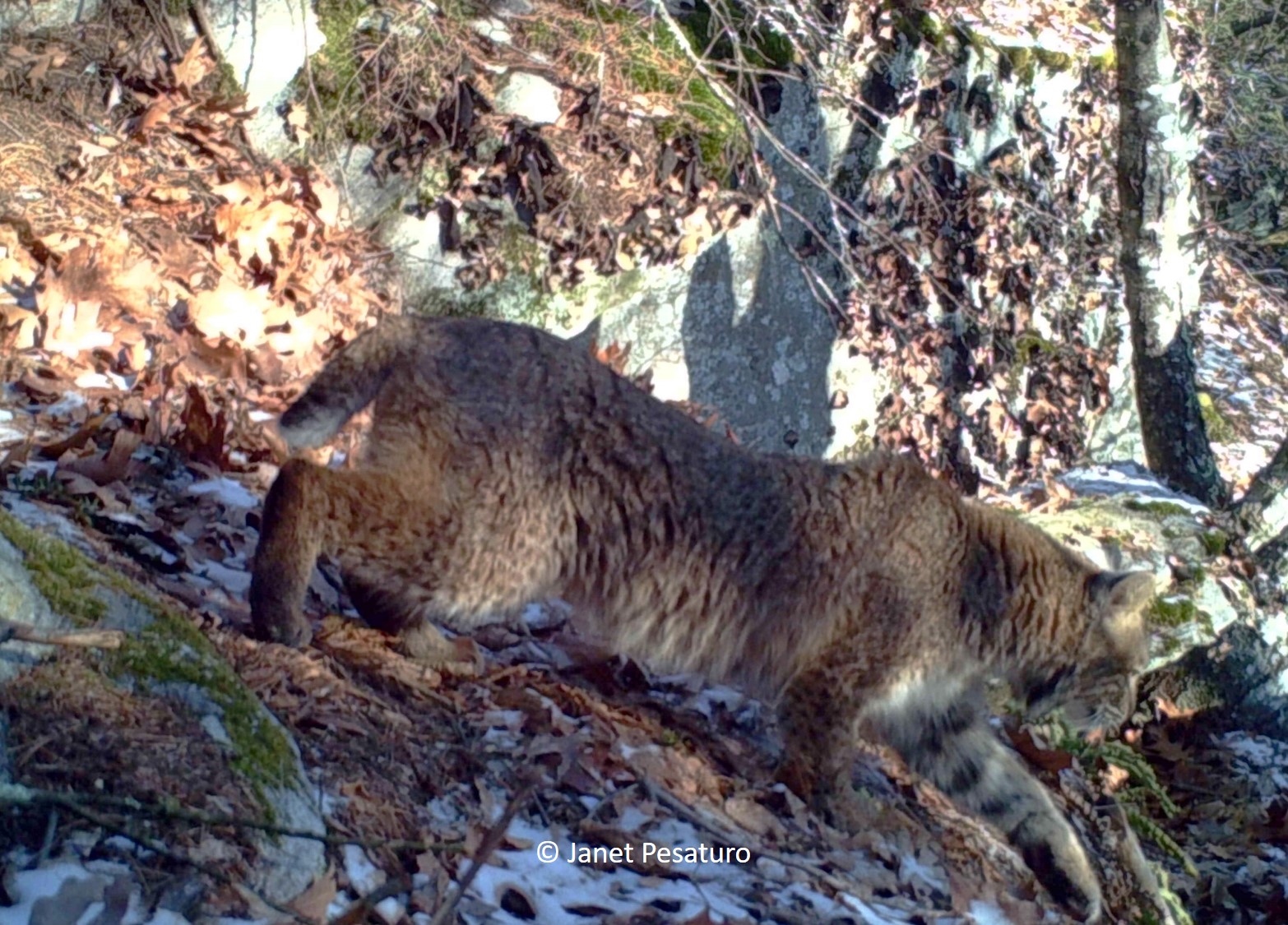
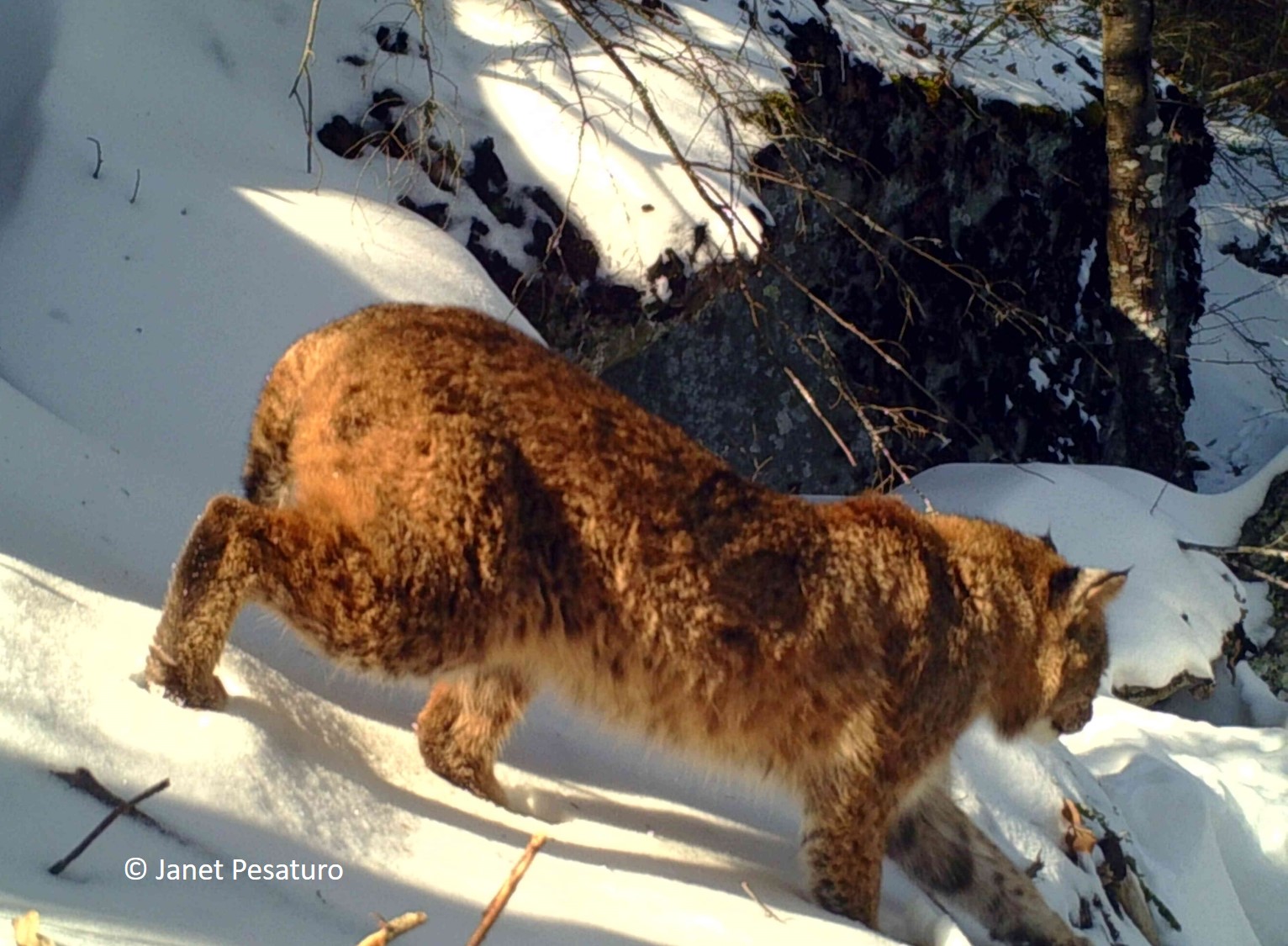
Aside from the seasonal variation, bobcats in certain geographic areas tend to be more reddish than the ones in other locations. Those in the forests of western Canada tend to be darker and redder than bobcats of the desert Southwestern US. I do not yet have photos to show that but it makes sense that desert bobcats would be paler to match the sandy desert background.
Read more about the importance of camouflage in wildlife.

Great video! Fun watching the animals sniff the camera.
Glad you enjoyed it. Yes, many animals are curious about cameras. Fortunately, most animals do not damage them. For the most part only bears do that, but even most of them just sniff and move on.
Love the video, what do you suggest for a first time trail camera buyer, nothing too $$$$$.
Thanks
Hi Becky. Prices range from about $50-700. Basically you get what you pay for, and for $150-250 you can get a good, reliable camera. For a bit less than $200 I like the Browning Spec Ops Advantage. For about $225, the Exodus Lift II has a few more bells and whistles. Both have very good image quality. There are many, many other models that I haven’t yet used. Generally I’d avoid going less than $100. If you do, be sure to read the specs very carefully because they do cut corners on the cheaper ones. For example, some of them have no holes for a cable lock and you can’t get a security box that with fit them, so there is no way to secure it. Most cheap ones also have a very high rate of “lemons”, and some have very poor customer service. I hope that helps. Let me know if you have further questions.
Thanks, for responding!!!
Janet – Beautiful and informative. Thanks for Sharing!
Glad you enjoyed it, Matt. I hope you’re camera trapping is going well!
Hi I love this website
Just had one casually walk across the Trans Canada Highway in Northern Ontario in front of my truck. Lucky no one was behind, I came to a dead stop. He looked back at me once safely behind the guard rail on the northern side. Perhaps a juvenile he looked skinny and had his summer coat on. About the size of a German Sheppard but skinny.
Your information confirmed what I saw, I wasn’t sure as he had no spots…..first sighting in 10 years for me!!!
Thank you
Congrats on the sighting! Yeah they do tend to look skinny in their summer coats. Of course as wild predators they live on the edge, it’s always challenging to find enough food. They do look much better in their fluffy winter coats.